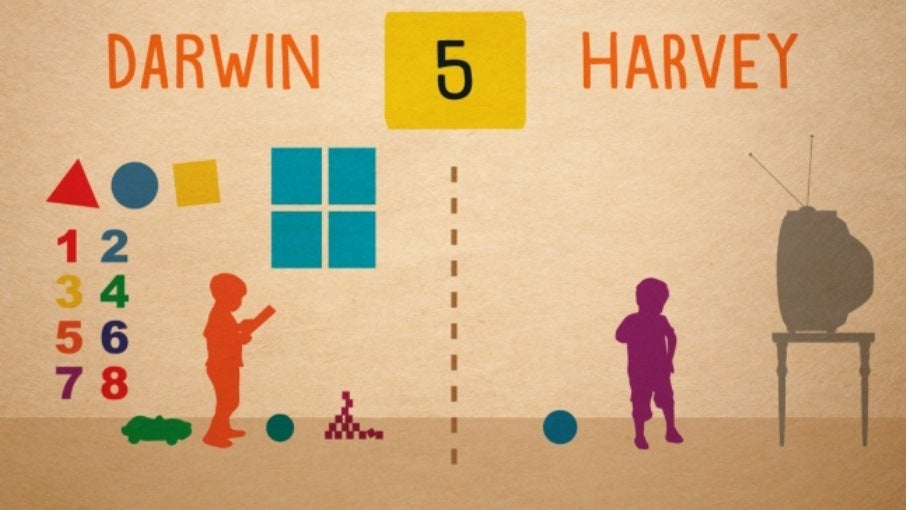In my previous post, I introduced the PRIDI project and the Engle Scale and highlighted some of the really interesting results – like the importance of the nurturing environment for child development – that are emerging from the project. In this post, I talk about some of the more specific findings.
Who are the PRIDI children?
They are about 8,000 kids in total; 2,000 from each of the four participating countries: Costa Rica, Nicaragua, Paraguay and Peru. On average, they are about 3 and a half years old. Half are boys and half are girls. Most all speak Spanish, although there are important populations that speak indigenous languages in Paraguay, Nicaragua and Peru. Most of their moms have some level of secondary education, and most live in homes with access to basic services. Not all homes have books, in fact about 40% of PRIDI children live in homes without books.
Results from the Engle Scale find significant variation in levels of their development. There is variation by domain – that is, cognition, language, socio-emotional and motor. By country. And by sub-group within each country, like between rich and poor children, children who speak indigenous languages and those who speak Spanish, and those who are in a nurturing environment and those who aren´t.
Variation like this sends a worrying message. Not all kids in the four PRIDI countries are developing well, or on time, or in a manner that will lead them to success in school and in life.
To illustrate, let´s take two kids as examples: Harvey and Darwin. They could be from any one of our PRIDI countries.
Harvey lives with his mom. She finished primary education and started secondary. But she dropped out in 9th grade. She works two jobs, which means she´s rarely at home. Harvey spends his days not doing much of anything. He plays by himself, or tries to find something interesting to do. His grandma is around, but she spends most of her time watching TV. She doesn´t play much with Harvey.
Darwin lives with his mom and dad, both of whom graduated from college and have full time jobs. When they are at home, they dote on him. They spend their mornings, evening and weekends together, reading with him, playing with him, engaging him in conversation, and taking him to see interesting things.
Both Harvey and Darwin are three and a half years old. Both are boys. But that is pretty much where the similarities between the two end. Darwin is way ahead of Harvey in his development. In fact, differences between Harvey and Darwin were already evident a year and a half ago, at two years.
Fast forward these guys to age five.
Darwin will be ready for school. He knows the difference between in front of and in back of. He knows a triangle is a triangle and not a square. He can count to 20. He knows his colors. Harvey doesn´t. He can’t do any of these things. Harvey won´t be ready for school and likely will face many challenges while there.
Our data tell us by the time Harvey reaches 5 years, his cognitive and language development will basically be at the same level Darwin´s is now – at three and half years.
What accounts for these differences between these two boys?
Let´s take three key factors.
First, the more obvious. Darwin´s parents are rich in comparison to Harvey´s mom. Darwin lives in a nicer home, probably one that has books, toys, games, computers and internet. Darwin eats a balanced diet, gets regular medical and dental checkups, and gets to do a number of enriching activities – like take piano lessons or play on a soccer team. Our data tell us that the socio-economic environment of the home is more important for some of the domains measured by the Engle Scale than others.
By the time Darwin is five, just on the account of being in a richer household, he will be far ahead of Harvey. The gap between the two boys is equivalent to: 2 months in cognitive development, 9 months in motor skills, and 16 months in language development.
Darwin´s parents are both educated. We know that parental education, particularly the education of the mom, is a really important factor in child development. But, again, the association is not uniform across domains. It is stronger for cognition and language and weaker for socio-emotional, so much so that it is not a statistically important correlation in the case of Costa Rica.
Darwin is growing and developing in a nurturing environment. This was the topic of my last blog. The nurturing environment is really important for child development. It matters for all domains of child development that the Engle Scale measures, in all four countries, and for all populations within these countries.
Take again Darwin and Harvey. By the time he turns five, just on the account of being in a nurturing environment, Darwin will be far ahead of Harvey, with gaps equivalent to 8 months in his cognitive development, 13 months in language skills, and 19 months in his motor development.
But, if Harvey was in a nurturing, his development would start to look like that of Darwin’s. His socio-emotional development, in particular, would be on par with Darwin’s. This is no small gain. A number of high level researchers, including Nobel laureates like James Heckman, find that non-cognitive skills, like socio-emotional skills, are just as important for success in school as the cognitive ones.
There are many more details to all of this. And all of this has implications for policy and the targeting of ECD interventions. To learn more, please check our new PRIDI website www.iadb.org/pridi.



Leave a Reply